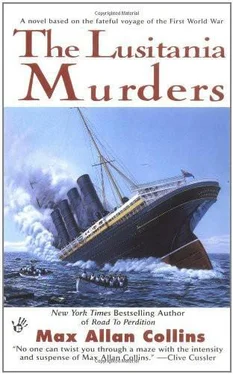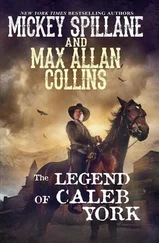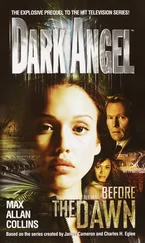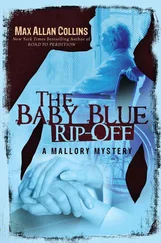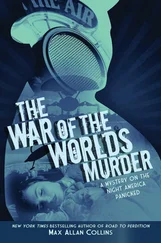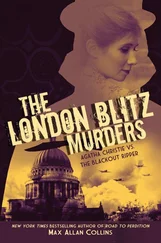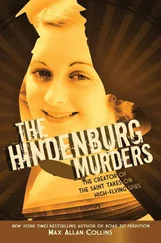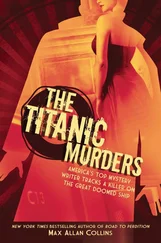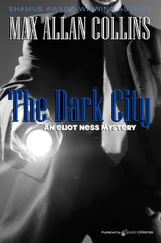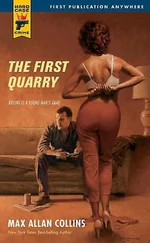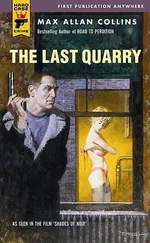Max Collins - The Lusitania Murders
Здесь есть возможность читать онлайн «Max Collins - The Lusitania Murders» весь текст электронной книги совершенно бесплатно (целиком полную версию без сокращений). В некоторых случаях можно слушать аудио, скачать через торрент в формате fb2 и присутствует краткое содержание. Жанр: Криминальный детектив, на английском языке. Описание произведения, (предисловие) а так же отзывы посетителей доступны на портале библиотеки ЛибКат.
- Название:The Lusitania Murders
- Автор:
- Жанр:
- Год:неизвестен
- ISBN:нет данных
- Рейтинг книги:3 / 5. Голосов: 1
-
Избранное:Добавить в избранное
- Отзывы:
-
Ваша оценка:
- 60
- 1
- 2
- 3
- 4
- 5
The Lusitania Murders: краткое содержание, описание и аннотация
Предлагаем к чтению аннотацию, описание, краткое содержание или предисловие (зависит от того, что написал сам автор книги «The Lusitania Murders»). Если вы не нашли необходимую информацию о книге — напишите в комментариях, мы постараемся отыскать её.
The Lusitania Murders — читать онлайн бесплатно полную книгу (весь текст) целиком
Ниже представлен текст книги, разбитый по страницам. Система сохранения места последней прочитанной страницы, позволяет с удобством читать онлайн бесплатно книгу «The Lusitania Murders», без необходимости каждый раз заново искать на чём Вы остановились. Поставьте закладку, и сможете в любой момент перейти на страницу, на которой закончили чтение.
Интервал:
Закладка:
Four other books provided the bulk of the information I drew upon, and all are quality works, any one of which would be worthwhile for a reader who’d like to know more about this subject (most also tell the story of the U-boat that sank the Lusitania, which is absent from this novel): Exploring the Lusitania (1995), Robert D. Ballard with Spencer Dunmore; The Last Voyage of the Lusitania (1956, 1996), A.A. Hoehling and Mary Hoehling; The Lusitania (2000), Daniel Allen Butler; and Seven Days to Disaster (1981), Des Hickey and Gus Smith.
Also useful were Lost Liners (1997), Robert D. Ballard, Rick Archbold and Ken Marschall; The Lusitania (1972), Colin Simpson; The Lusitania Disaster (1975), Thomas A. Bailey and Paul B. Ryan; The Lusitania’s Last Voyage (1915), Charles E. Lauriat, Jr.; and The Military History of the Lusitania (1965), Louis L. Snyder. Of these, Simpson’s book is probably the best known and most widely circulated, and provided me with information about Leach and the stowaways, as well as some nice details about the sinking. Some of Van Dine’s movements during the sinking are drawn from Lauriat’s experiences.
I also viewed two documentaries, Sinking the Lusitania (2001), written by its director John Booth with David Davis; and National Geographic: Last Voyage of the Lusitania (1994), directed by Peter Schnall and written by Patrick Prentice. The latter follows Robert Ballard’s exploration of the shipwreck, which dispelled some theories about the cause of the sinking. Both documentaries were helpful.
My portrait of Elbert Hubbard drew upon Elbert Hubbard of East Aurora (1926), Felix Shay; “Elbert Hubbard: Warrior with Words,” an article by Norman Carlise in the April, 1955 issue of Coronet ; and various Roycrofters publications, in particular issues of The Philistine . Much material on Hubbard is available on the Internet, including several pages of his aphorisms. Most of what Hubbard says in this novel comes from his writing and speeches and other quoted sources; his feelings about Mr. and Mrs. Isador Straus, the tragic couple who died on the Titanic, are from an article he wrote, rather presciently. Alfred Vanderbilt material was drawn in part from Who Killed Society? (1960), Cleveland Amory, although Vanderbilt-like Hubbard-was covered in detail in various Lusitania books. Ideas for period apparel were aided by Maryanne Dolan’s Vintage Clothing 1880–1960 (1987). The material on S.S. McClure and Edward Rumely came from Loughery’s Van Dine biography and the excellent Success: the Life and Times of S.S. McClure (1963) by Peter Lyon.
The government opened postwar reparations hearings that enabled businesses and individuals to make claims for losses caused by Germany’s actions during the war, including the Lusitania sinking. Various government publications of the United States and Germany Mixed Claims Commission and other reparations tribunals served as perhaps the most useful source of information on Lusitania passengers. Here we found the information on Charles Williamson’s shady deals, which came to light when his relatives made claims on papers of his describing art and other assets that, under investigation, proved not to exist.
Also used were various issues of The New York Times from right before and after the tragedy. Times coverage provided the background on Madame DePage and the dock scandal that grew out of the German blockade.
This was a difficult novel for many reasons, not the least of which was my writing much of it in the aftermath of the September 11, 2001, tragedies. Such an event calls into question the value of entertainment-and for a number of days, I did not feel much like playing the role of entertainer-and proved particularly troubling to a writer in the process of creating a confection based around another tragedy of war.
That the Lusitania prefigured so much of the September 11 tragedies-one of my references reported a survivor comparing the swift sinking of the ship to “the collapse of a great building on fire”-made this task both more distressing and, finally, rewarding. Through the distance of history, in the guise of entertainment, I could explore some of the same issues that plague us almost a century later. I hope I have provided not only escape, but a morsel or two of food for thought, and that this mystery novel is in no way disrespectful to the gravity of such dire events.
I am grateful to my editor, Natalee Rosenstein of Berkley Prime Crime; when I was drowning in research materials, Natalee-who had in the first place suggested the Lusitania as a “disaster mystery” subject-threw me a life preserver by extending my deadline. My friend and agent, Dominick Abel, lent his usual support, and also helped buy me valuable time. And my wife, Barb-in a stressful period-was as always the best first mate a skipper could hope for. Unlike Elbert Hubbard’s wife, Alice, however, she always had plenty to say.
About the Author
Max Allan Collins has earned an unprecedented eleven Private Eye Writers of America “Shamus” nominations for his historical thrillers, winning twice for his Nathan Heller novels, True Detective (1983) and Stolen Away (1991).
A Mystery Writers of America “Edgar” nominee in both fiction and nonfiction categories, Collins has been hailed as “the Renaissance man of mystery fiction.” His credits include five suspense-novel series, film criticism, short fiction, songwriting, trading-card sets and movie/TV tie-in novels, including In the Line of Fire, Air Force One and the New York Times -best-selling Saving Private Ryan .
He scripted the internationally syndicated comic strip Dick Tracy from 1977 to 1993, is co-creator of the comic-book features Ms. Tree, Wild Dog and Mike Danger , has written the Batman comic book and newspaper strip, and the mini-series Johnny Dynamite: Underworld . His graphic novel, Road to Perdition , is the basis of the DreamWorks feature film starring Tom Hanks and Paul Newman, directed by Sam Mendes.
As an independent filmmaker in his native Iowa, he wrote and directed the suspense film Mommy, starring Patty McCormack, premiering on Lifetime in 1996, and a 1997 sequel, Mommy’s Day . The recipient of a record five Iowa Motion Picture Awards for screenplays, he wrote The Expert, a 1995 HBO World Premiere; and wrote and directed the award-winning documentary Mike Hammer’s Mickey Spillane (1999) and the innovative Real Time: Siege at Lucas Street Market (2000).
Collins lives in Muscatine, Iowa, with his wife, writer Barbara Collins, and their teenage son, Nathan.
*Van Dine refers here, obliquely, to a drug addiction that he battled, off and on, throughout his younger years, when opium and marijuana were weaknesses of his artistic temperament. He wrote of his problem only once, in a 1917 essay for The Medical Review of Reviews, in which he rather farsightedly made the statement, “Drug addiction is a disease. The fact that it is self-imposed does not alter its status.” M.A.C.
*Frohman was forty-seven.
*Twenty-four-by-fifty.
*The pair of Regal Suites, on either side of the Promendade Deck, catered to the creme de la creme of transatlantic travellers; each suite offered a dining room, two bedrooms, a bath and toilet, and sitting rooms for maids and valets.
*Of the seventy-seven positions he had attempted to fill, Staff Captain J.C. Anderson managed only forty-one.
*As he reports it, Van Dine has organized the tour in a fashion that suits his literary intentions; but he perhaps gives a false impression of the geography of the ship. The upper decks, A and B, were shared by the first and second classes, and Decks C and D were shared by the first, second and third classes. Only Deck E was exclusively third class (cabins only). Segregation of classes was accomplished in various ways; the Saloon dining room on D Deck, for example, was separated from the Second Cabin dining room by a network of galleys and pantries.
Читать дальшеИнтервал:
Закладка:
Похожие книги на «The Lusitania Murders»
Представляем Вашему вниманию похожие книги на «The Lusitania Murders» списком для выбора. Мы отобрали схожую по названию и смыслу литературу в надежде предоставить читателям больше вариантов отыскать новые, интересные, ещё непрочитанные произведения.
Обсуждение, отзывы о книге «The Lusitania Murders» и просто собственные мнения читателей. Оставьте ваши комментарии, напишите, что Вы думаете о произведении, его смысле или главных героях. Укажите что конкретно понравилось, а что нет, и почему Вы так считаете.
